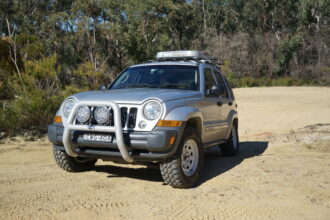Comparing the new generation of dual cab utes to one another is a bit like comparing your favourite brand of canned tuna. At the end of the day one may have a fancier label than another, but they both come from the same boat off the coast of Thailand.
It’s a bit of the same with dual cabs these days. Most, if not all, of them are built in Thailand within a stone’s throw of one another using a handful of the same local suppliers. Sure, they’re assembled in different factories and have different designs (Isuzu and Toyota’s ute factories are within less than a kilometre of each other, Mitsubishi’s is a little further away) but they all end up at the same port for export to Australia. Also, they’re all pretty damn good.
For the full story and all images, CLICK HERE
Want a fancy ‘upmarket’ interior? They all have it. Rear diff lock? Yep, you can get it on all of them. They all have independent front suspension with a coil-over architecture, with a solid axle out back supported by leaf springs, except for Nissan’s new Navara which has coil springs. So when it comes to purchasing one, it really comes down to the price you’d like to spend, and it seems a lot of Australians (presumably tired of the Toyota tax) have been switching to Mitsubishi’s Triton.
And after driving the new steed from the triple-diamond brand, you’d have to think that trend will continue, because it’s light years ahead of the previous generation. Perhaps most-importantly, it looks better than the outgoing model, and while that isn’t saying much, it will help to solidly position this vehicle against the HiLux and the Navara which have always been a bit more put together. Prices are reasonable too, with a base-spec Triton running $3,000 less than its Nissan counterpart, at $36,990. If you’re in the market for a loaded dual cab ute, equipped with all the bells and whistles, you’ll pay $47,490 for the Exceed model, which I have to say was quite impressive. I especially like the MATT traction system on the Exceed, which gives you a plethora of drive options, ranging from 2WD for the ultimate in fuel economy, to the security of AWD, and the get-you-anywhere attitude of proper high-and-low range 4WD.
You don’t get that on the Nissan Navara that’s priced at $7,000 more, and while you do get the fancy coil sprung rear end that’s heaven on corrugations, for some reason the Triton just feels better, lighter, and more agile on the bitumen.
The interior is well thought out, striking a good balance between that high-end modern feel and the ability to be wiped down after a day on the tracks. I do remember the air conditioning being a bit weak though, which was surprising as our long-term Pajero practically turned the car into a portable freezer, these were pre-production models we were driving but it might be something to pay attention to. Oh, and if you’d ever driven the prior Triton, you’ll be happy to know they’ve fixed the seats; the new ones are comfortable even after the roughest day in the bush. The old ones were granite slabs.
I’d bet that just like the previous Triton, this one ends up becoming a bit of an unsung hero. I still think that the HiLux will win the awards from the motoring press, likely due to its Toyota pedigree; but if you’re smart, that won’t bother you. The Triton is a strong contender at a serious value, and one that you’ll likely be able to pick up for a healthy discount. Without a doubt, it’s the best ute they’ve released to date.
Words By Matthew Scott









